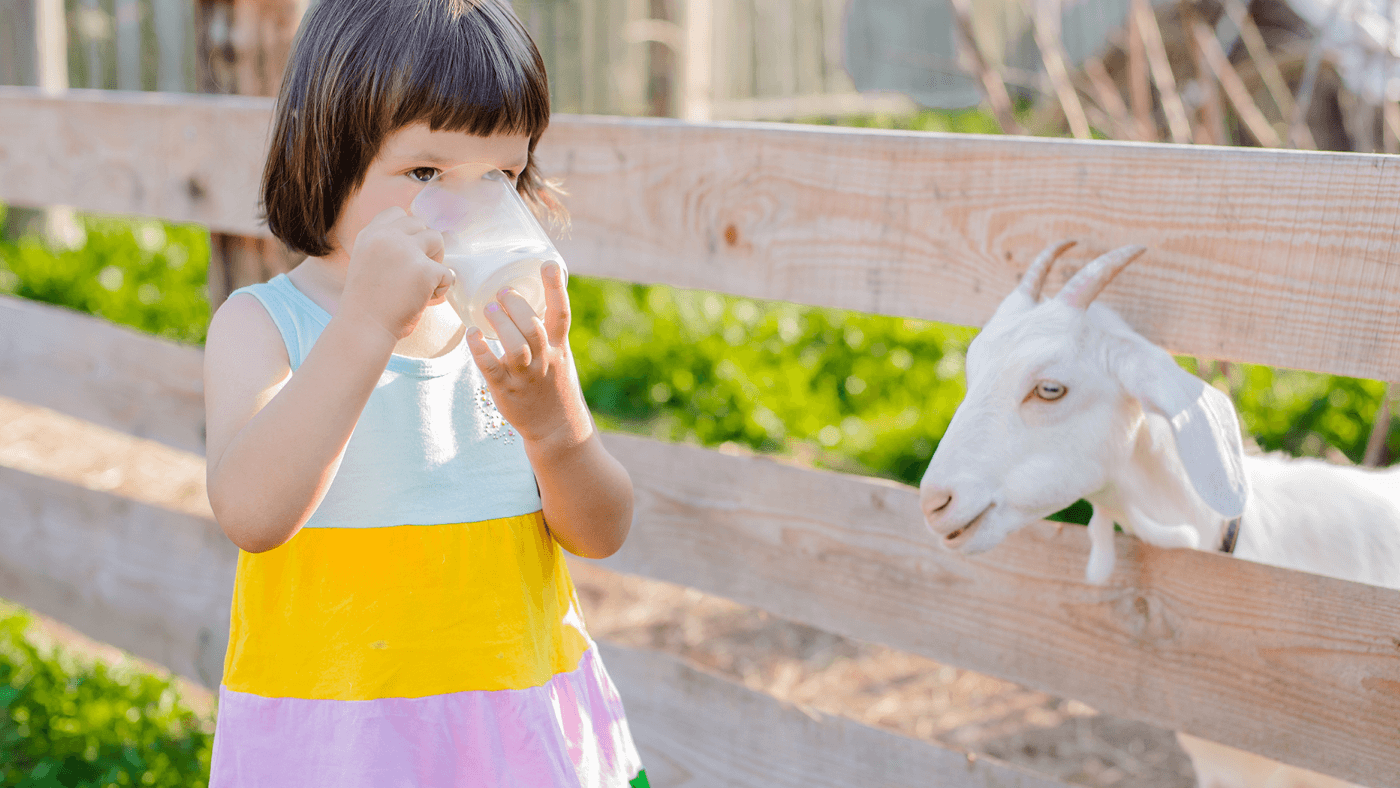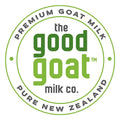What Does Goat Milk Taste Like?

One big question that we’re often asked by potential customers who are considering the healthy switch from cow’s milk to goat milk is, “what does goat milk taste like?” We would love to be able to just hand these folks a glass and tell them to try it, but that’s a little difficult to do over the internet! And we understand that purchasing an entire package of a product without knowing whether you’ll like it doesn’t make much sense. So, today we’re taking a look at the perceptions and facts about goat milk’s unique but familiar flavor, which many people prefer to other animal milk once they’ve tried it.
It’s true that there isn’t one single answer to the goat milk taste question. If you’ve already perused our FAQs about goat milk, you know that most people say it doesn’t taste that much different from cow’s milk, and that’s generally true. But, depending upon the type of commercially available cow’s milk you’re most used to drinking – 1%, 2%, whole, or skim – you may find the consistency of goat milk to be unexpected or different. Obviously, consistency is not the same thing as “taste,” but whether goat milk seems rich and creamy or thin and watery to you will be based on what you’re used to. And, as with cows, the flavor of goat’s milk depends upon several additional factors about the source animals themselves, where they are raised, and how the milk is processed and stored.
Butterfat content affects the flavor
Among dairy goat farmers, who often have strong opinions about the milk of different goat breeds (with their chosen breed or breeds’ milk being the best, of course), there is a general consensus that butterfat content most affects the milk’s flavor. Different breeds typically produce milk with varying butterfat content, though the most popular dairy breeds produce milk within the 2.5%-4% butterfat range. Those percentages compare to grocery store regular 2% to whole cow’s milk. (The higher the butterfat content, the creamier the milk will be in consistency.) There are a few goat breeds, such as the Nigerian Dwarf and Nubian, that produce milk with even higher butterfat content, and their milk would compare more closely to half and half in consistency and flavor.
Here at the Good Goat Milk Company, we rely on Saanen goats, the predominant goat breed in New Zealand today, for our products. Their milk tends to have a lower butterfat content closer to 3%, and if you’re used to 2% cow’s milk, you’ll find the consistency, and likely the overall flavor, of milk from Saanen goats to be similar.
A good environment means better milk
Did you know that where goats live makes a difference in the flavor of their milk, too? This partly has to do with what their diet consists of based on what’s locally available for feed, but happy goats raised on smaller local farms produce the most flavorful milk. Our goats eat healthy New Zealand pasture plants like grass and clover, as well as hay and silage in the winter, to meet their unique dietary needs. Unlike traditional bovine dairy farming, raising dairy goats does not require such vast amounts of pastureland and numbers of animals to produce a high-quality product, either. Our farmers have small herds, which allows them to control the flavor and freshness of their milk carefully. And that means better tasting milk for you.
Proper handling and cooling is necessary
If you’ve ever heard someone complain that goat milk tastes “goaty” or “like a barn” instead of slightly sweet and refreshing, it’s likely that the milk they tried was not processed, cooled, or stored correctly after the goat provided it! Many steps occur between milking on the farm and you purchasing milk in your local grocery store or farmer’s market regardless of what animal supplied it. A most important step for preserving the “correct” flavor in animal milk between pasteurization, which raises milk to a temperature of 165 Fahrenheit, and storage at 40 Fahrenheit or lower, is rapid cooling. Typically, cooling goat milk in under 20 minutes produces the best-tasting milk. After milk is initially cooled, it must stay consistently refrigerated until it’s consumed, as well, or it could spoil and really leave a bad taste in your mouth.
This is where our New Zealand Natural Full Cream Goat Milk Powders have a significant advantage over traditional fluid milks, by the way. After pasteurization and proper cooling, our products are dried. This process locks in all of the nutritional benefits of goat milk but creates a convenient format that does not require refrigeration. Thanks to drying, our GMO, hormone, and antibiotic-free goat milk packs the same delicious, mild flavor when you prepare it at home as it has when it leaves our local New Zealand farms.
You simply must try it!
So, have we enticed you to try goat milk yet? There’s really only one way to discover what goat milk tastes like, and that’s to try it for yourself! As we previously mentioned, if you’re currently a regular 2% milk drinker, you’ll almost certainly like the mild yet creamy flavor of our Natural powdered variety. Of course, many of our customers love the added honey sweetness of our New Zealand Natural Full Cream Goat Milk Powder with Manuka Honey, too! Both of our delicious varieties are loaded with nutritional benefits and digestive system friendliness that beat out cow’s milk every time.
You can also bake with goat milk like you would with regular bovine milk. If you’re nervous to just sip a glass of goat milk for your initial introduction, substituting it into a favorite recipe (or trying one of ours) in place of conventional milk may be the best idea for you. Assure that any fluid goat milk you purchase locally is processed and stored correctly before baking with it, or simply prepare our powdered product and mix it in as you would regular cow’s milk. We think you’ll be delighted with how your finished baked treats taste!
Still have questions about what goat milk tastes like or why our goat milk products from New Zealand are a better choice for your health? Get in touch with us today!
